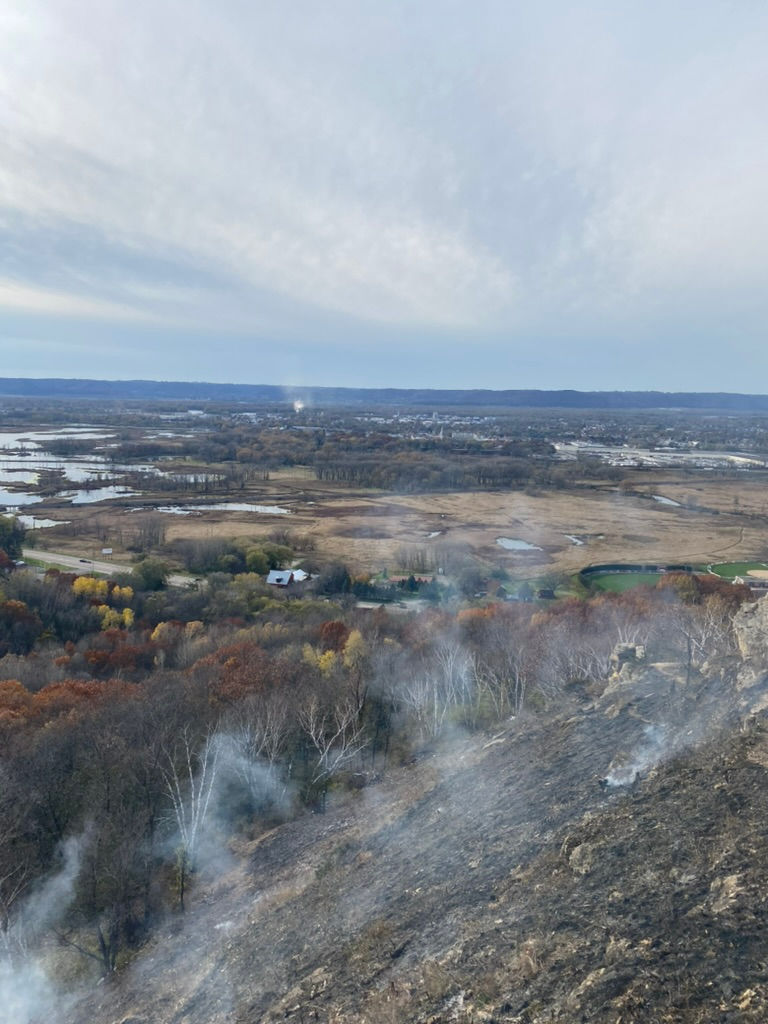Add Fringed Puccoon to the Mix!
- jonathanrigden
- Jun 23, 2022
- 2 min read
As Friends of the Blufflands works to restore the goat prairies on the bluffs surrounding La Crosse, we occasionally come upon native plants that we haven't seen yet. We recently added fringed puccoon to our growing list of flowering plants for one prairie alone, bringing the total to 56 species typically found on these dry bluff prairies.

The name fringed puccoon comes from the conspicuous fringed flower as compared to the other puccoons. It takes the name "puccoon" from a Native American word that means a root used for making a dye. In the past, a blue-purple dye was made from the fringed puccoon root...not something recommended today since the plant is relatively rare! The Latin name is Lithospermum incisum, meaning "stone-seed" describing the hard seeds from this plant, and incisum referring to the fringed, tooth-like edges of the flower.

It grows up to 16 inches tall, is hardy with a long tap root, and is found in dry, sandy and rocky soils in sunny locations. The leaves are long and narrow with a prominent central vein- leading to another common name, narrow-leaf puccoon.

The flowers of fringed puccoon are interesting. The most obvious flowers, as seen in the photos, are distinguished by their long tubular structure with five fringed petals forming a crinkled margin. They are equipped with the full compliment of structures normally found in flowers including the male stamens and female pistils with a style and ovary. They practice "chasmogamy" or "open marriage" with other fringed puccoon plants and rely on certain butterflies and possibly the ruby-throated hummingbird for cross-pollination. But, they are rarely successful at producing a seed. Less conspicuous, obscure flowers that arise from the leaf axils are highly fertile but are "cleistogamous", literally translated as "closed marriage". These flowers do not open and rely on self-fertilization. The seeds produced from each of these obscure flowers contain 4 oblong hard nutlets with a bony white seed. Chasmogamous reproduction is advantageous for adding genetic diversity while cleistogamous is more reliable and does not require nectar and elaborate flower structures to attract pollinators.
All of the puccoons in this area have proven to be difficult to establish in planted prairies or to transplant (definitely NOT recommended!). This is likely because of the stringent habitat requirements for these plants including the fungal and other microscopic organisms that the plant requires and are found in the soil on bluff prairies.
It is wonderful to add this beautiful, delicate flowering plant to our growing list that make up the assemblage of native flowering plants on our prairies! As Friends of the Blufflands continues to restore and enlarge the bluff prairies in our area, we hope to continue to discover new native plants to add to the list!





Comments